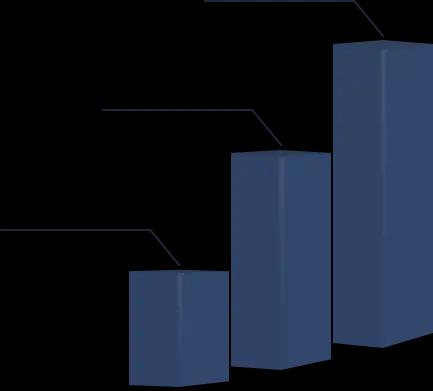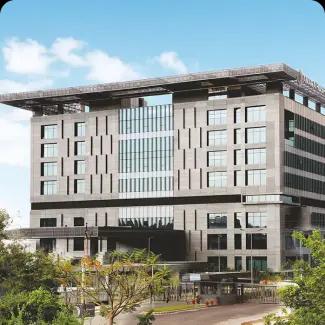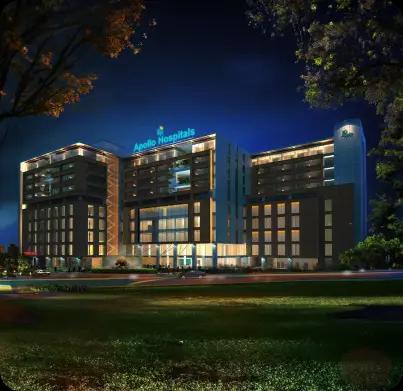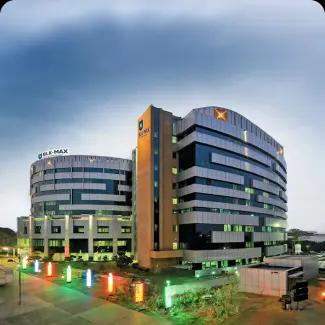
Deep Brain Stimulation (DBS)
Medical procedure that involves implanting electrodes in specific parts of the brain. It helps to modulate variations of electrical signals. This form of therapy helps in alleviating symptoms of movement disorders like Parkinson’s disease, tremors and dystonia. Quality of one’s life can be improved by applying this procedure when conventional treatments fail.
Free Pick up and Drop
No Cost EMI
Post Surgery Care
Medical procedure that involves implanting electrodes in specific parts of the brain. It helps to modulate variations of electrical signals. This form of therapy helps in alleviating symptoms of movement disorders like Parkinson’s disease, tremors and dystonia. Quality of one’s life can be improved by applying this procedure when conventional treatments fail.
Symptoms Of Deep Brain Stimulation (DBS)
Symptoms
DBS itself isn't a disease, so it doesn't cause symptoms. It's a treatment for conditions that cause these symptoms:
Types of conditions
There are undefined main types of Deep Brain Stimulation (DBS)
Causes/Risk Factors
DBS itself isn't a disease, so it doesn't have causes. It's a treatment for conditions that have their own causes.
However, DBS does have potential risks and complications to consider. Here are some of the main ones:
- Surgical Risks: As with any surgery, there are risks associated with the implantation procedure itself, such as bleeding, infection, and stroke.
- Infection: There's a risk of infection around the implanted electrodes or the neurostimulator device.
- Hardware Issues: The electrodes or the neuro stimulator device itself could malfunction and require replacement surgery.
- Stimulation-Induced Side Effects: The electrical stimulation can cause side effects depending on the targeted area of the brain. These could include speech problems, tingling, balance issues, or mood changes.
- Battery Replacement: The neuro stimulator battery will need to be replaced every few years, which requires a minor surgical procedure
Preparing for Surgery
Here's a breakdown of the typical preparation involved before Deep Brain Stimulation (DBS) surgery:
Weeks before surgery
Medical Evaluation: Your doctor will conduct a thorough medical history and physical exam to assess your overall health and suitability for surgery.
Neurological Tests: You'll likely undergo tests like MRI scans to create detailed images of your brain. These are crucial for planning the electrode placement during surgery.
Medication Review: Discuss all medications and supplements you take with your doctor. Some medications might need to be adjusted or stopped before surgery.
Anesthesia Consultation: You'll meet with an anesthesiologist to discuss your anesthesia plan for the surgery.
The day before surgery
Fasting: You'll likely be instructed to stop eating or drinking anything after midnight to avoid complications during anesthesia.
Medications: Your doctor will advise you on which medications, if any, to take the morning of surgery.
Scalp Preparation: In some cases, your head might be shaved and cleaned with a special solution to minimize infection risk.
Day of surgery
Hospital Admission: You'll be admitted to the hospital on the day of surgery.
Fiducial Placement: Small markers (fiducials) might be placed on your scalp to help guide the electrode placement during surgery with imaging.
Imaging with Markers: Another MRI scan or CT scan might be done with the fiducial markers in place to ensure precise electrode targeting.
Anesthesia: You'll likely receive general anesthesia to keep you asleep and comfortable during the surgery.
Treatment Details
Types
The specific type of DBS refers to the targeted brain region for electrode placement, depending on the neurological condition being treated. Here are some common types:
-
DBS for Parkinson's Disease: Targets the subthalamic nucleus (STN) or globus pallidus pars interna (GPi) to improve symptoms like tremor, stiffness, and slowness of movement.
-
DBS for Essential Tremor: Targets the thalamus, specifically the ventral intermediate nucleus (Vim) or posterior nucleus (VIMp), to reduce uncontrollable shaking.
-
DBS for Dystonia: Electrodes can be placed in the thalamus (Vim), globus pallidus interna (Gpi), or subthalamic nucleus (STN) depending on the specific type of dystonia.
-
DBS for Obsessive-Compulsive Disorder (OCD): Targets the anterior limb of the internal capsule (ALIC) or the striatum ventralis caudate/putamen (VC/VP) to manage severe, treatment-resistant OCD symptoms.
-
DBS for Epilepsy: Electrodes are implanted in the thalamus (anterior nucleus (AN) or centromedian nucleus (CM)) to help control seizures that are not adequately controlled by medications.
Technology used
Deep Brain Stimulation (DBS) relies on several technological advancements to be a viable treatment option. Here's a breakdown of the key technologies involved:
1. Stereotactic Targeting:
- This technology ensures precise placement of electrodes within the brain.
- It uses high-resolution imaging techniques like MRI scans to create a 3D map of the brain.
- Specialized software helps pinpoint the target location for optimal therapeutic effect and minimal side effects.
- During surgery, a stereotactic frame might be used to guide the electrodes to the planned location.
2. Microelectrode Technology:
- DBS electrodes are thin wires with multiple electrical contacts along their length.
- These advanced wires are insulated and biocompatible to minimize tissue damage and rejection.
- The multiple contacts allow for targeting specific neural populations within the brain region.
- The size and design of the electrodes have improved over time, allowing for less invasive procedures.
3. Neurostimulators:
- These implantable devices deliver the electrical pulses to the brain tissue via the electrodes.
- Modern neurostimulators are programmable, allowing doctors to adjust stimulation parameters like frequency, amplitude, and pulse width based on individual needs.
- They are powered by internal batteries that need replacement every few years through a minor outpatient procedure.
4. Computer Programming Systems:
- Sophisticated computer software is used to program the neurostimulator settings after implantation.
- This allows for fine-tuning the stimulation to achieve optimal symptom control while minimizing side effects.
- Doctors can monitor and adjust the settings during follow-up appointments based on the patient's response to the therapy.
-
- Imaging Techniques:
- Pre-operative imaging like MRI scans are crucial for planning the electrode placement strategy.
- Post-operative imaging might be used to verify the placement of electrodes and assess for any complications.
Recovery
Recovering from Deep Brain Stimulation (DBS) surgery involves a combination of rest, physical therapy, and adjustments to your DBS settings. Here's a breakdown of what to expect:
Immediately After Surgery:
- You'll likely spend 1-2 days in the hospital for monitoring and initial adjustments to your DBS settings.
- Bruising and swelling around the incision sites are normal and will subside with time.
- You might experience temporary headaches or discomfort.
The First Weeks:
- Focus on getting plenty of rest to allow your body to heal.
- Gradually resume light activities as tolerated, but avoid strenuous exercise for several weeks.
- Physical therapy may be recommended to help regain strength, balance, and coordination, especially if you have movement disorders like Parkinson's disease.
- Your doctor will closely monitor your DBS settings and make adjustments as needed to optimize symptom control.
Long-Term Recovery:
- Most people can return to work and normal activities within 1-2 weeks after surgery.
- You'll need regular follow-up appointments with your doctor to monitor your DBS system and make adjustments to the stimulation settings as needed.
- The DBS battery will need to be replaced every few years (typically 3-5 years) through a minor outpatient procedure.
Additional Points:
- Pain Management: Your doctor will prescribe pain medication to manage any discomfort after surgery.
- Incision Care: Follow instructions for keeping the incision sites clean and dry to prevent infection.
- Driving: You may need to wait for doctor's approval and regain full control of your movements before resuming driving.
- Risks and Complications: Be aware of potential risks associated with DBS, such as infection, bleeding, and stimulation-induced side effects. Discuss these thoroughly with your doctor.
- Lifestyle Adjustments: You might need to adjust certain activities or hobbies depending on your condition and response to DBS.
Your journey to good health begins here

Accredited Hospitals
Nationally accredited hospitals for high-quality care

Multi-language Support
Convey your needs in the language you're most comfortable in

Travel Booking Assistance
Seamless booking assistance for your healthcare journey

Personalised Treatment Plans
A treatment journey tailored to all your preferences and needs

Unparalleled Hospitality
Experience exceptional hospitality during your stay

Easy Medical Visa Approvals
Dedicated assistance for medical visa requirements
Plan your healthcare journey with Karetrip!
India’s Best Hospitals are Partnered With Karetrip
Access World-Class facilities from top Hospitals across India
Consult with India’s most experienced doctors
Experience premium care from India’s leading specialists

Dr. Sagari Gullapalli
Neurologist
7+ Years Of Experience

Dr. Venkata Swamy Pasupula
Neurologist
24+ Years Of Experience

Dr. Neetu Ramrakhiani
Neurologist
21+ Years Of Experience

Dr. Rajiv Anand
Neurologist
37+ Years Of Experience

Dr. Abhinav Raina
Neurologist
38+ Years Of Experience

Dr. Mohit Bhatt
Neurologist
34+ Years Of Experience
Cost Estimation
Learn about the expenses involved in the procedure and what factors affect them.

DBS surgery can be quite expensive, with the total cost varying depending on several factors. Here's a breakdown:
Cost Factors:
Hospital fees: This includes facility charges, operating room time, and hospital stay.
Surgeon's fees: The experience and expertise of the surgeon can significantly impact the cost.
Anesthesiologist fees: Separate charges for anesthesia during surgery.
Implant costs: The electrodes and neurostimulator device itself
Medications: Antibiotics and other medications used during and after surgery
Post-surgical care: Follow-up appointments, programming adjustments for the stimulator, and potential physical therapy.
Location: Costs can differ based on the geographic location of the hospital.
The average cost of the Deep Brain Stimulation (DBS) in India is around ₹8,00,000 to ₹15,00,000.

₹15,00,000
High Cost
₹12,00,000
Average Cost
₹8,00,000
Low Cost
The LIST of AVERAGE COST of the Deep Brain Stimulation (DBS) across TOP 4 cities in India in Indian Rupee (INR) is as follows :
City
Lowest Cost
Average Cost
Highest Cost
Mumbai
₹9,00,000
₹12,50,000
₹14,00,000
Delhi
₹10,00,000
₹12,00,000
₹14,00,000
Hyderabad
₹900,000
₹12,00,000
₹14,00,000
Chennai
₹8,00,000
₹12,00,000
₹15,00,000
Commonly Asked Questions
What is DBS?
DBS is a surgical procedure that uses implanted electrodes to deliver electrical current to specific areas of the brain, helping to manage symptoms of certain neurological disorders.
What conditions can DBS treat?
DBS is commonly used for Parkinson's disease, essential tremor, dystonia, severe OCD, and epilepsy that doesn't respond well to medication.
Is DBS a cure?
No, DBS doesn't cure the underlying condition, but it can significantly improve symptoms and quality of life for people with these neurological disorders.
How much does DBS cost?
The cost of DBS can vary depending on factors like hospital, surgeon's experience, and location. In India, it typically ranges from ₹5 lakh to ₹15 lakh.
Are there any risks associated with DBS?
Yes, DBS carries potential risks like surgical complications, infection, and side effects from electrical stimulation. Discussing these risks with your doctor is crucial.

Do you still have a query?


"I had a successful surgery at Fortis Escorts Hospital, and it was all thanks to Karetrip's help in finding the right hospital for me. The entire process was smooth and stress-free, with Karetrip handling all the arrangements and answering any questions I had. The medical team at the hospital was outstanding, and the facilities were top-notch. I highly recommend Karetrip to anyone looking for a tension-free healthcare experience."
Read MoreFatima
Chattogram


"Thanks to Karetrip, I got connected with MAX Hospital in New Delhi. The team guided me through every step – from finding the right doctor to handling travel and visas. They made a daunting process feel like a breeze. The care I received at MAX Hospital was outstanding, and I can't thank Karetrip enough for making it possible. They truly put patients first and go the extra mile to ensure a smooth healthcare journey. I'm grateful beyond words!"
Read MoreHasan
Dhaka


"At first, I was unsure about having a medical procedure done in a foreign country. However, Karetrip's team at Indraprastha Apollo Hospital made me feel much better. The hospital was very clean, modern, and had everything they needed to help me. The staff were very kind and did everything they could to make me feel comfortable. I'm really happy with how my treatment turned out, and I appreciate Karetrip for making it easy and stress-free."
Read MoreImran
Sylhet
 Google Reviews4.9/5
Google Reviews4.9/5




I had a successful surgery at Fortis Escorts Hospital, and it was all thanks to Karetrip's help in finding the right hospital for me. The entire process was smooth and stress-free, with Karetrip handling all the arrangements and answering any questions I had. The medical team at the hospital was outstanding, and the facilities were top-notch. I highly recommend Karetrip to anyone looking for a tension-free healthcare experience.
Fatima
Chattogram
 Google Reviews4.9/5
Google Reviews4.9/5



















